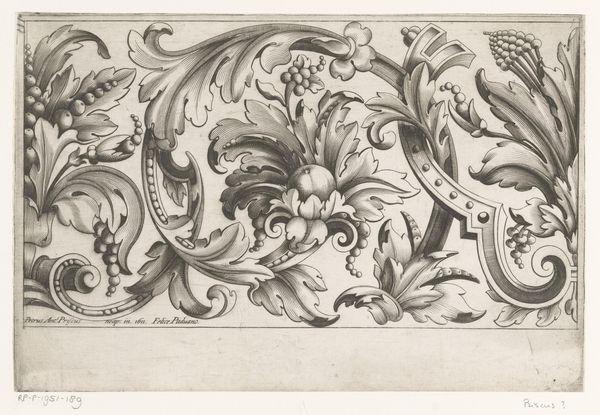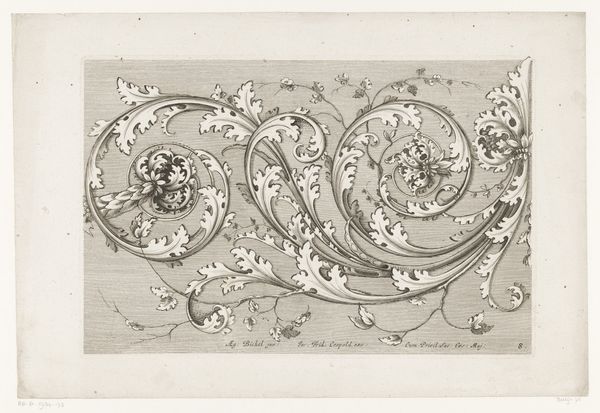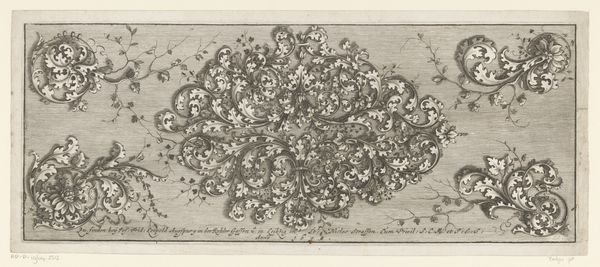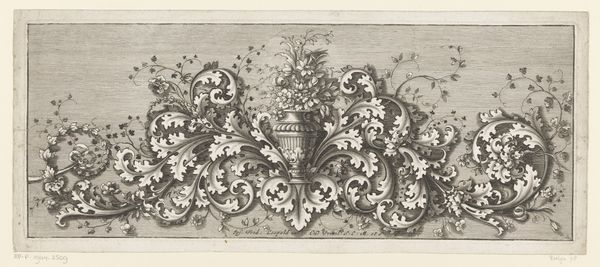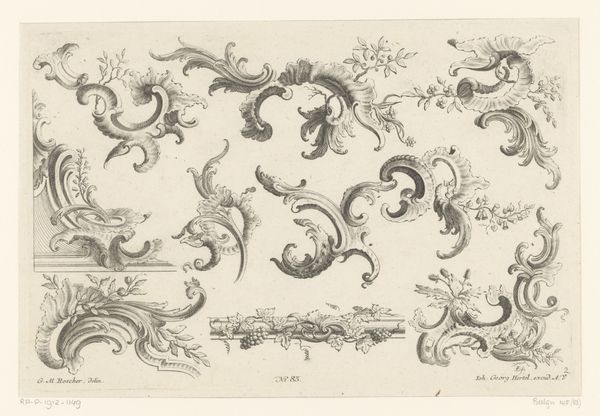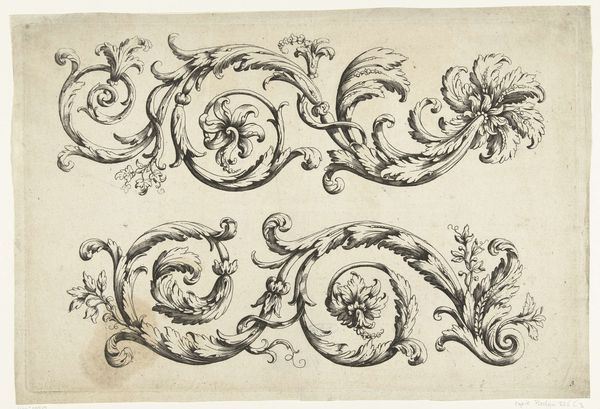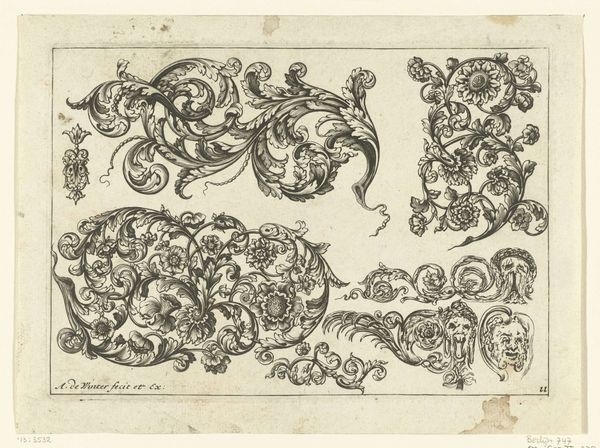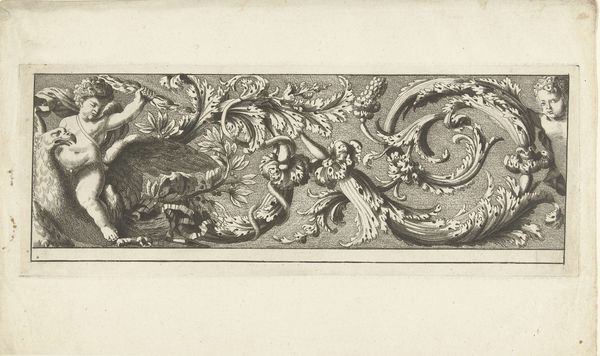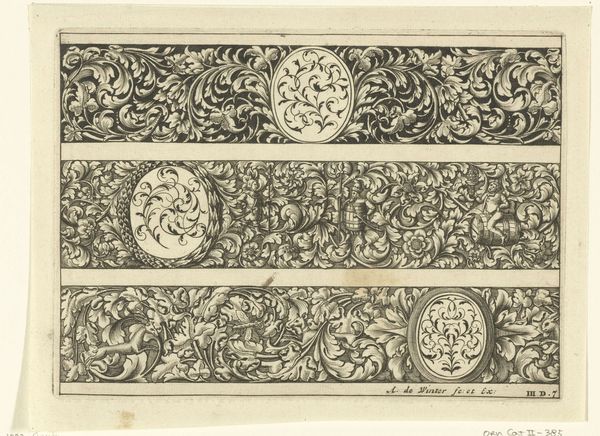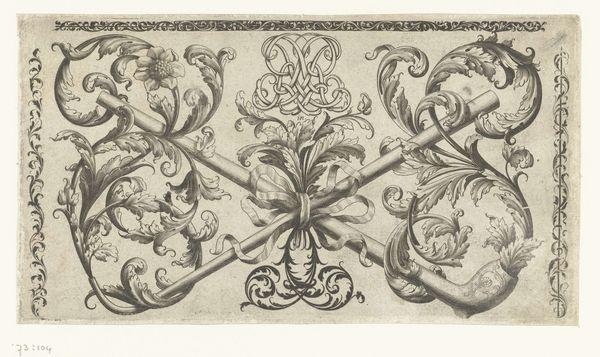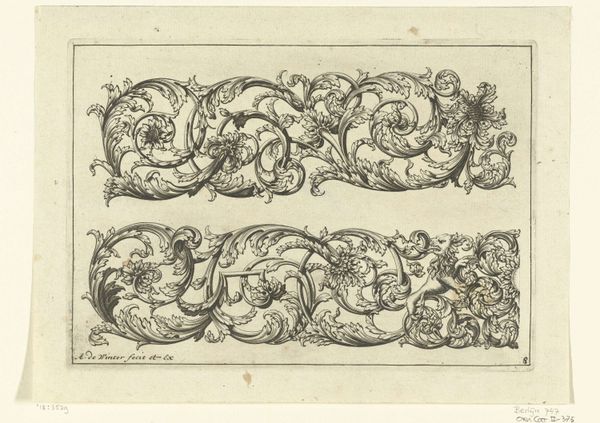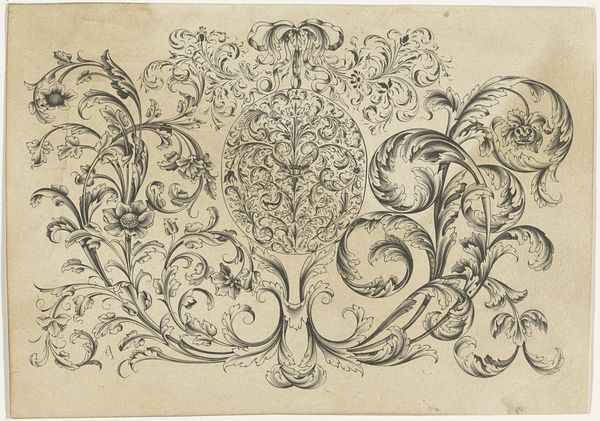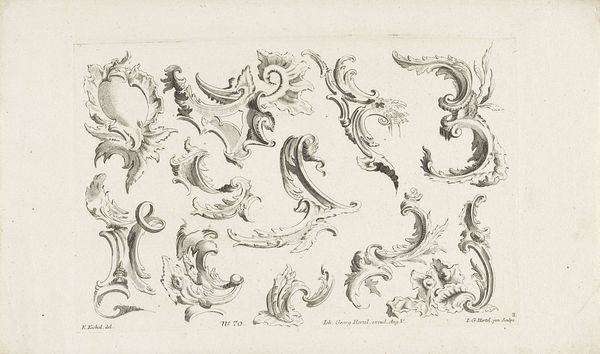
print, engraving
#
baroque
# print
#
line
#
decorative-art
#
engraving
Dimensions: height 168 mm, width 417 mm
Copyright: Rijks Museum: Open Domain
This print of acanthus tendrils was made by an anonymous artist, and it demonstrates a popular ornamental motif. The acanthus plant, native to the Mediterranean, has been a recurring visual code in Western art and architecture since ancient times. Its stylized leaves, known for their deeply lobed form, have come to symbolize enduring life. Consider the institutions that have kept this imagery alive. The plant's association with classical antiquity made it a perfect fit for the Renaissance, whose artists and patrons self-consciously revived classical styles. The persistence of the acanthus motif tells us something about the social function of art. Ornamentation helps enshrine certain values, and this design might comment on the conservative social structures of its own time. To more fully understand this print, we could look to design manuals and architectural treatises. The meaning of art is always contingent on its social and institutional context.
Comments
No comments
Be the first to comment and join the conversation on the ultimate creative platform.
